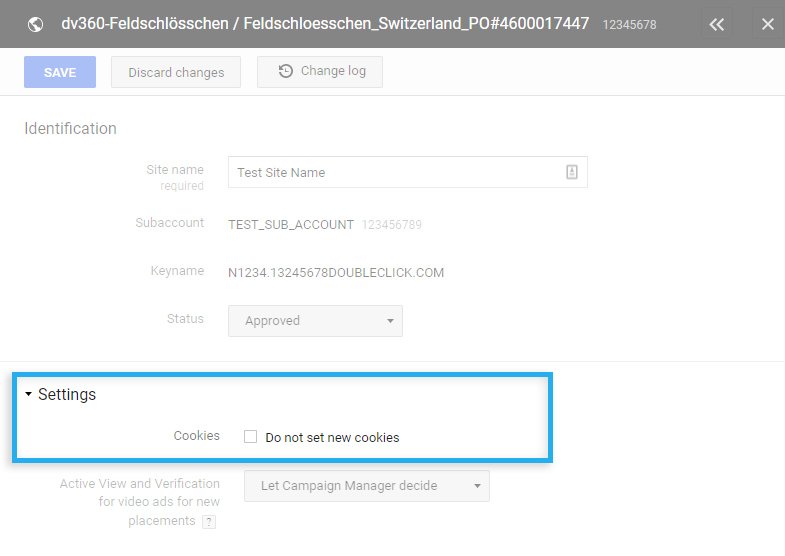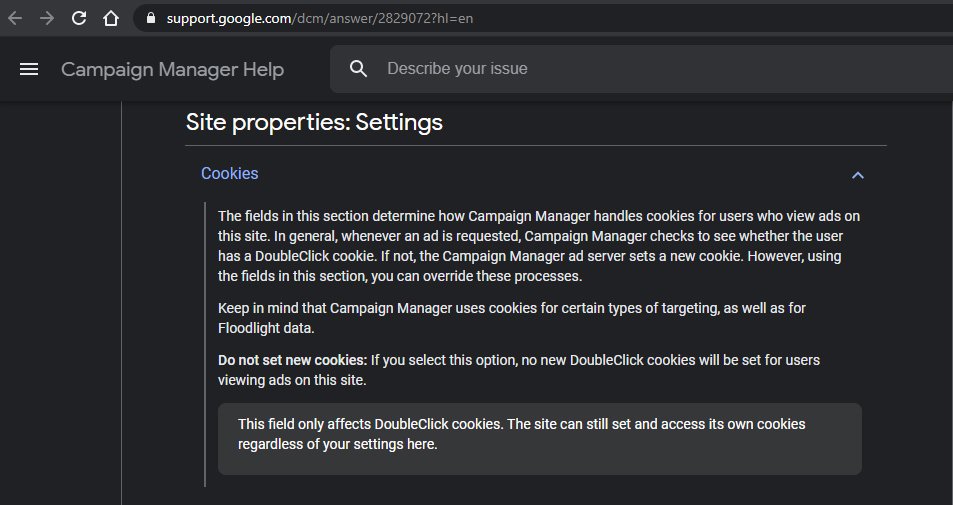Do not set cookies? Google Campaign Manager
Google Campaign Manager has multiple options and settings. But there is one fascinating one. With this option, you will stop using Cookies for your campaigns.
Filter by Category
Filter by Author

Google Campaign Manager has multiple options and settings. But there is one fascinating one. With this option, you will stop using Cookies for your campaigns.
Posted by Wojtek Andrzejczak

Learn how you can create Google Floodlight segments in Google Search Ads 360.
Posted by Wojtek Andrzejczak

Thousands of Google DV360 campaign visits, which are nowhere reported, and trigger DDoS attack alarms on the server firewall. Was it a DDoS attack, or something else?
Posted by Wojtek Andrzejczak

How to enable campaign External ID setting under the Google Campaign Manager campaign? And why this option is so important?
Posted by Wojtek Andrzejczak

Learn how to check if your Google Floodlight fires on the website. Verify your conversions with Google extensions and with DevTools.
Posted by Wojtek Andrzejczak

Learn three facts about the iframe sandbox attribute. What HTML5 IFrame tag is and how you can use the sandbox attribute.
Posted by Wojtek Andrzejczak

The fact that Page speed is critical it is a well-known fact. But what impact does it have for our digital advertising?
Posted by Wojtek Andrzejczak

Integrate Firebase conversions in Google Campaign Manager, Google Display & Video 360 and Google Ads to optimize your native app campaigns.
Posted by Wojtek Andrzejczak

Google Enhanced attribution is an answer for Apple Intelligent Tracking Prevention (ITP). But how does it actually work?
Posted by Wojtek Andrzejczak

8 implementation facts you should know while implementing Google Floodlight conversions with Global Site Tag.
Posted by Wojtek Andrzejczak

Google Campaign Manager has multiple options and settings. But there is one fascinating one. With this option, you will stop using Cookies for your campaigns.
Contents
Inside of the Site settings section, you can find a Cookie setting, where you can enable “Do not set new cookies” option.

Ok, so maybe we check first how Google describes this option, it could perhaps clarify something.

Yeah, right.
No, it is not a non-cookie solution for Apple ITP. What it does, it disables setting any new cookie in the user browser.
If a user doesn’t have a Google cookie and we don’t want a new cookie to be created, which would let us identify a user who has interacted with the ads.
Google Campaign Manager will not be able to attribute post-view and post-click conversions. No cookies, no conversions, no user audience, no retargeting. Just ads, impressions, and clicks. Fantastic.
Thank you that you ask. It is an excellent question. I’ve been trying for some time to get an answer from Google Support.
But everything I got was that I should use this option when I don’t want to set the cookies to track user activity. Unfortunately, Google documentation is also missing the answer.
Skip setting cookies does not have any sense for me. It is merely in direct conflict with the advertising concepts for targeting and reporting.
After some thinking, I’ve two ideas when this option would make sense, so I’ve tried to verify these scenarios.
When GDPR was introduced, it was general confusion, who is responsible for what and when to keep user data private. And it was not clear how to make sure that the user is opt-in or opt-out on the website.
But there is one problem, the advertiser delivers the ad to the website. It is not in his control to determine if the user is opt-in our out.
That’s why Google has introduced in the Google Publisher Tag (GPT) option to turn off personalized ads if the user is opt-out. In that case, user cookies set in his browser do not affect the retargeting campaigns, which relies on his cookies. The user will receive random ads, not related to his profile.
But how does it have in common with our non-cookie option? Does not. GPT opt-out setting does the whole job for us.
In the beginning, it had the sense to me. But when I’ve tried to find any specific restrictions, for example, China, Japan, India. I did not find anything saying directly that personalized cookies are not allowed to be set. In many countries, the government requires like in the EU to set cookie consent on the website.
Google has some restriction regarding reach reports, targeting in-app devices, but I was not able to find any evidence which would force us to skip setting cookies by default.
But since I’m not a lawyer, I’d be very interested if someone would clarify this case for me : – )
In my opinion, a long time ago, some placed this option for some specific reasons, but now no one knows why this option is here in the first place.
As far as I can see, there is no possibility to use it. And no one can provide any use case when this option should use.
Subscribe to receive updates about new articles.

6 steps to activate Floodlight in DV360 for TrueView for Action campaign.

TCF 2.0 as a new source of problems with the campaign discrepancies for 3rd party tags used in the digital campaigns. What is TCF 2.0? Shortly, TCF became a privacy standard to...
Hey thanks to your screenshot i could find how to disable this cookie !
My purpose on this topic is : A CM tag is used in a web client software (to play poker) and someone in the team uses a campaign manager tag to display poker event visuals (but nothing related to advertising campaign) alongside the login popin window (in a Iframe).
So as we don’t want any cookie (here it creates an ‘IDE’ Google cookie) to be created, because we don’t want to display any GDPR cookie banner, we wanted to disable it and this seems the way to do it !